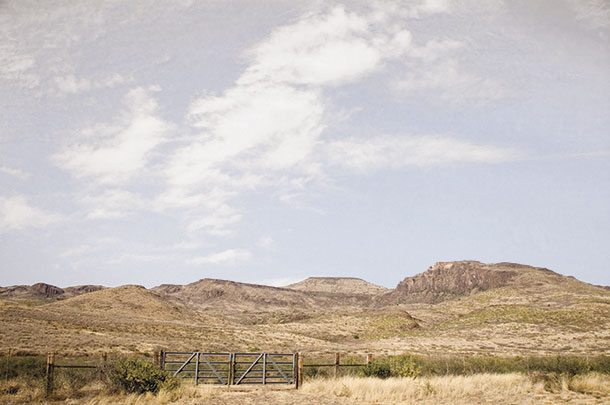Davy Crockett once said, “I must say to what I have seen of Texas, it is the garden spot of the world. The best land and best prospects for health I ever saw is here, and I do believe it is a fortune to any man to come here. There is a world of country to settle.”
Since the 1800s, Texas has been an open-range state – meaning it is not mandatory for livestock owners to fence in their livestock to prevent them from roaming. Livestock that wanders onto the land belonging to another are not classified as trespassers, and owners are not responsible for any damages caused by the livestock. However, local county ordinances and U.S. state highways may modify the common law.
Property running adjacent to U.S. and state highways is considered closed range. Livestock owners must keep their livestock from roaming unattended on interstate and state highways. It is their responsibility to build and maintain fences along these highways. If a landowner does not own livestock, there is no obligation to construct a fence.
Local governments have the ability to pass stock laws modifying common-law open rangeland to closed range. Stock laws do not allow certain species of animals, i.e., cattle and horses, to run at large within limits of the enacting county.
Fences in open- versus closed-range counties
Landowners in open-range and closed-range counties have different obligations when it comes to keeping and maintaining a fence around their livestock. In open-range counties, landowners are responsible to keep livestock off of their own land by building a fence. In contrast, closed-range counties with stock laws require livestock owners to fence in their livestock onto their own property.
Generally, a fence that sits on a property boundary line is owned by both neighbors, as long as both neighbors use the fence. Under this circumstance, both neighbors would share in the cost for repairing and maintaining the fence. Also, a neighbor cannot have the fence removed without consent from the other property owner.
In Texas, a landowner is under no legal obligation to share the cost or maintenance of a fence their neighbor built on the property line, unless there was an agreement to share in the cost. If a landowner does not help pay for the cost of building a fence, it does not constitute a common fence. In addition, if the fence is not built on the property line but on one landowner’s property, the fence is considered that owner’s exclusive property.
Issues can arise when the fence is built over the property line onto the other landowner’s property. The neighbor who benefits and gains more land from the erected fenceline may have a claim of ownership over that piece of land through adverse possession. Adverse possession is “actual visible appropriation of real property, commenced and continued under a claim of right that is inconsistent with and is hostile to the claim of another person.” This law of adverse possession essentially allows someone to take ownership of another’s land as long as certain requirements are met.
Recovery and damages
Because Texas is an open-range state, landowners generally may not recover damages caused to their property by another’s livestock. There are a few exceptions that allow recovery by a neighboring landowner: (1) if a livestock owner intentionally drives the livestock or other animals onto the property; (2) if the owner knows the cattle are diseased, breachy or vicious, they must not be allowed to roam at large; and (3) if a landowner erects a fence sufficient to disallow the entrance of livestock onto their property.
In closed-range counties, if a livestock owner permits their animals to roam freely, any animals that enter onto the property of another may be trespassing, and the owner will be held liable for any damages.
Estray laws provide the necessary procedures for landowners by which they can seek to remove stray livestock from their property. These laws require notice posted by the local sheriff, and if the owner is not located, the animal will be sold at public auction, and the proceeds will pay for sale expenses, impoundment costs and any damages to the landowner. ![]()
PHOTO: Roaming cattle and property boundaries set by fence are two areas that require producers observing herds, laws and neighborly lines. Getty Images.
References omitted but are available upon request. Click here to email an editor.
Alexis S. Long is a student at Texas A&M University School of Law.

-
James D. Bradbury
- Owning Partner
- James D. Bradbury PLLC
- Email James D. Bradbury







